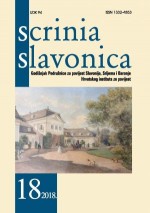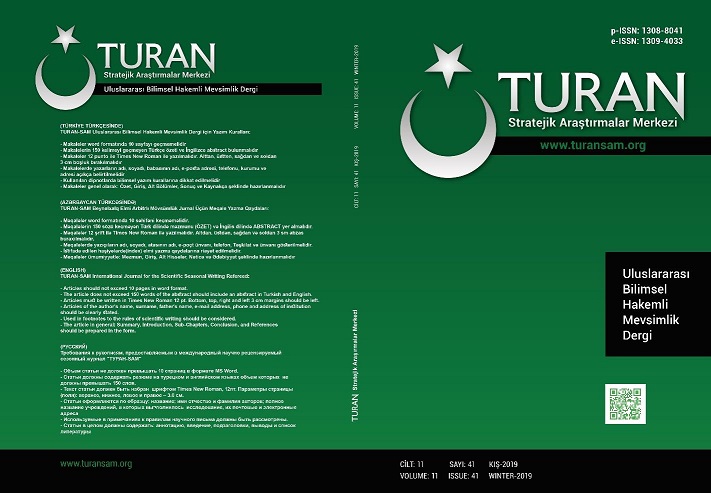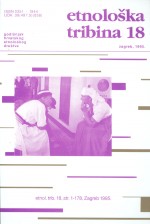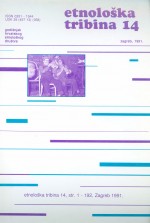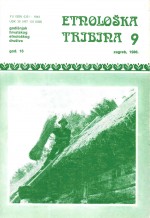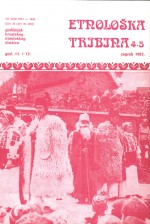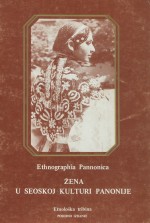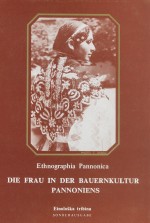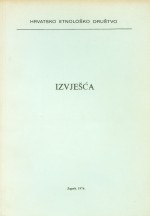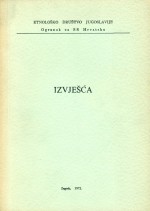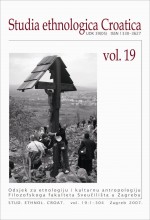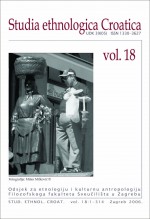Author(s): Ivana Jurković / Language(s): Croatian
Issue: 5-6/1976
The name Našice Region defines the area of Našice county, and that is the town of Našice, urban settlement Đurđenovac and another 56 populated places. Našice is situated in the part of Panonian plain where the Drava valley is the widest, somewhere between eastern and western part of Slavonia. This town has developed on the hills of Krndija which descend gently towards Podravina valley. The area is not large. Našice is situated in the middle of this region and it is surrounded by the villages on hills and sloping grounds of Krndija and in the valley towards the Drava. In the course of centuries there were migrations in this area, and they have not stopped even today. Našice was mentioned at the beginning of 13th century. The settlement of Podgorač was described in 1407, and D. Motičina in 1469. Other ancient villages were mentioned for the first time in 15th and 16th centuries. (Koška, Šaptinovci, Vukojevci, Klokočevci, Feričanci, Seona, Zoljan). It has been proved that the range of textiles of Našice Region consists of a great number of towels and these elements of cultural heritage are still very much present and its traditional function has been preserved and as the result weaving has been re-established in some villages. (Vukojevci, D. Motičina, Klokočevci, Bokšić, Martin). In their variety of workmanship, techniques colors, motives and names they represent a document about migrations which took place in this area in the past. In Našice Region they have different names. In Vukojevci, Stipanovci and Koška they are called "otarak". In Martin, Seona G. and D. Motičina, Gazije and Feričanci they are called "peškir". In Bokšić and Šaptinovci (and that used to be in Feričanci in the past) they call a towel "rub". Nevertheless, the name "peškir" prevails. There has not almost been an important event in life of a village that towels have not also been Included. There can be a great number of them during occasions as weddings, when dozens and dozens of them are distributed of there are occasions when only one towel is given as a present. They are used to express happiness and sorrow and they also express gratitude. Both girls and brides who use them to cover their baskets or jars with water are proud of their beauty. They are praised when a girl gets married. They show the economic state of an area, village, family or an individual. In the course of time they have acquired a very wide function. Beside those used in everyday life (for drying after washing face, covering dough for bread, drying dishes, etc.) there are also those used in special occasions - ranging from the ones used only by guests to those whose only function is in decorative purposes or as presents. A towel, specially, decorated, has become an obligatory, almost ritual element which is present during each occasion of any significance in a peasant life: in work (a basket with food is covered when it is taken to farm hands in fields), in happiness (given as a present for baptism or a wedding), in sorrow (a present given to church and priest during funeral). It was given to carpenters when they have built the first roof-spar during the putting on of the roof. Masons received it when building a house they finished building the first corner. Mirrors and sacred pictures in rooms were decorated with them or they used to be hanged on special hangers on walls. At Easter eggs were brought for consecration to church in a basket covered by a towel. They are woven from flax, hemp, cotton and their mixtures. They are woven in two yarns, in linen technique, but they can be also woven in four yarns. The weaving width is from 40-44 cm and length varies from 60-120 cm. Decoration, which is at selvage along the length, ranges from a simple one in stripe forms to a magnificent relief ornament made on a weaving-loom. Red color dominates decoration, and motives are usually geometrical.
More...
